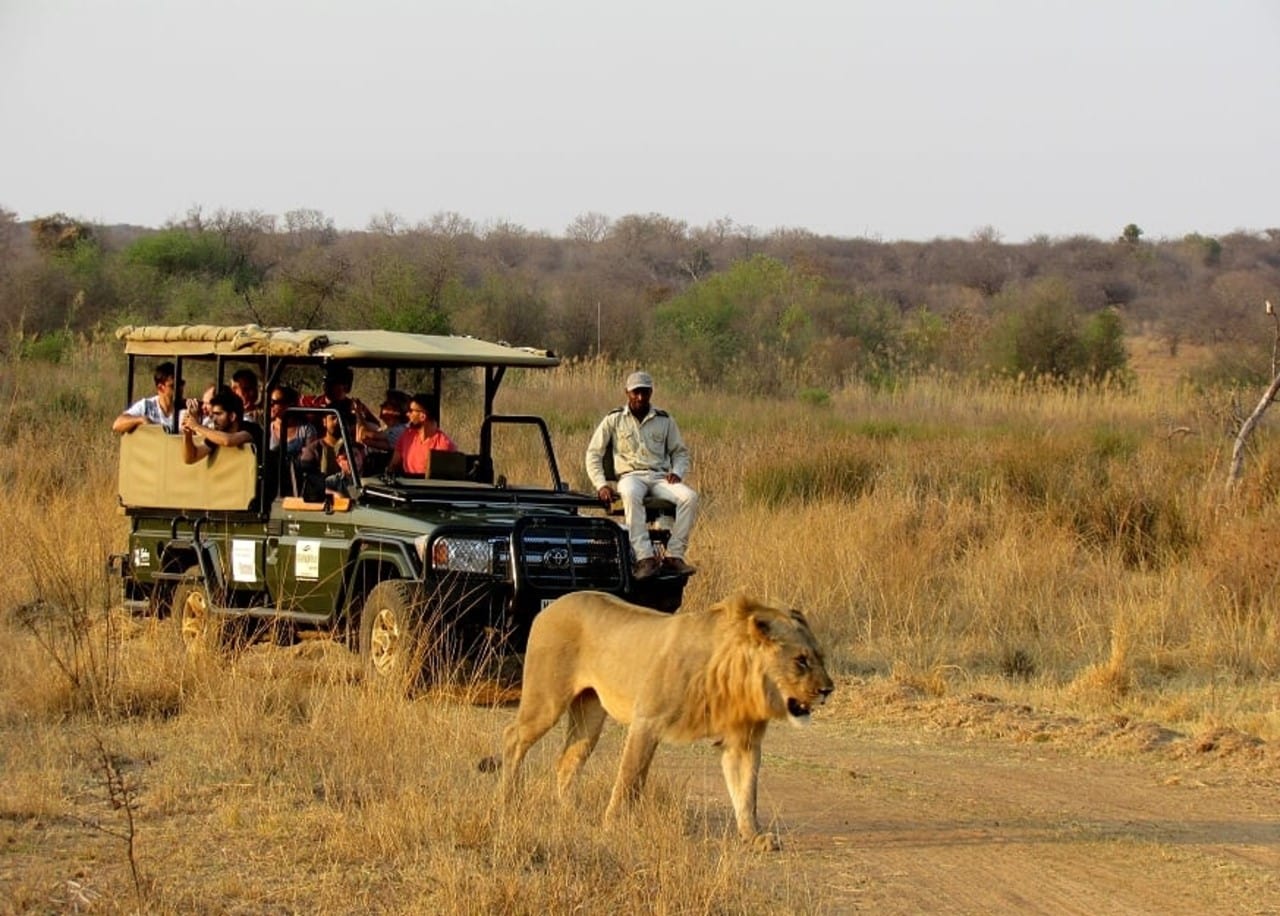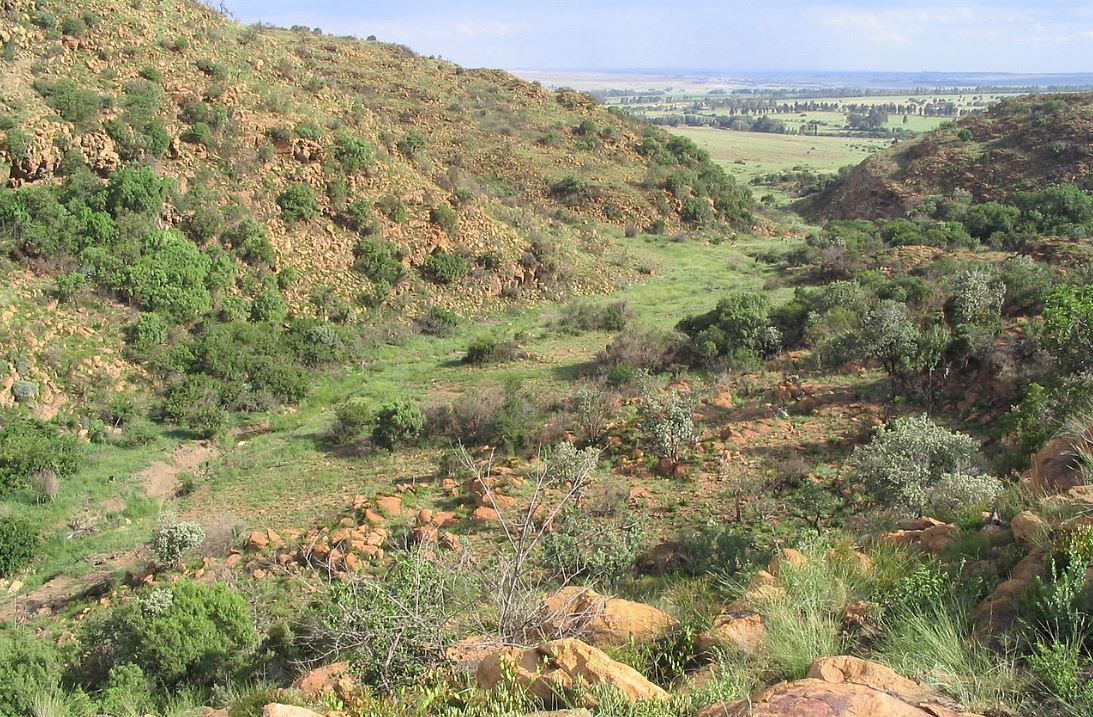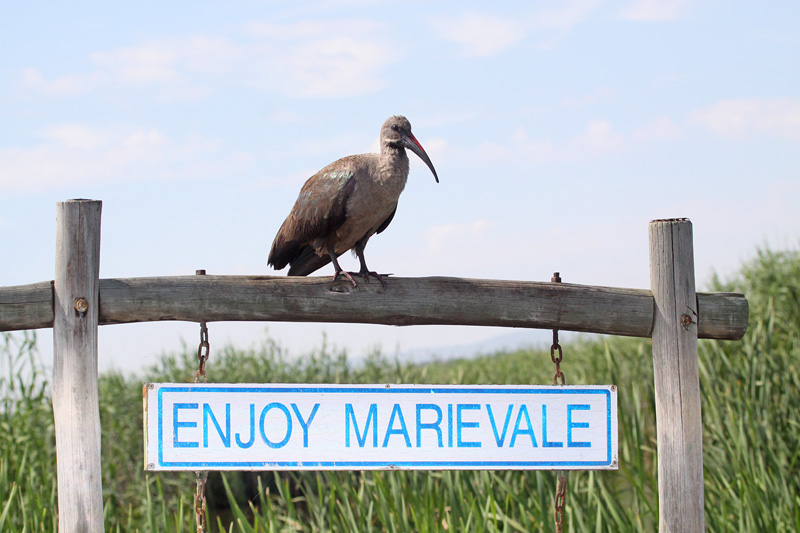Gauteng Province in South Africa is known for its bustling cities and urban development. However, it also boasts a number of game reserves that offer a tranquil escape from city life and a chance to experience the natural beauty of the African bushveld.
From large reserves offering the Big Five to smaller reserves specializing in bird watching, there is something for every nature enthusiast in Gauteng. In this article, we will explore some of the top game reserves in Gauteng and what makes each of them unique.
Our list of Game Reserves in Gauteng
Dinokeng Game Reserve

Dinokeng Game Reserve is a wildlife sanctuary located in the northern part of Gauteng, South Africa, just 45 minutes north of Johannesburg and 30 minutes north of Pretoria. It covers an area of approximately 18,500 hectares and is the only Big Five game reserve in Gauteng. The reserve is a conservation initiative that aims to restore the area to its natural state, and to conserve the indigenous fauna and flora of the region.
The name Dinokeng means “place of rivers” in the local Tswana language, and the reserve is situated in a beautiful valley surrounded by the Bobbejaansberg and Rust de Winter Mountains. The reserve is home to a variety of wildlife, including lions, elephants, rhinos, leopards, and buffalos, as well as over 300 bird species and other small game.
The reserve offers a range of activities, including game drives, guided walks, and hot air balloon rides. Visitors can also enjoy bird watching, fishing, and kayaking. The game drives are led by experienced guides who have extensive knowledge of the reserve and its wildlife, and visitors can expect to see a wide variety of animals, including the Big Five.
For those interested in cultural experiences, Dinokeng Game Reserve also offers visitors the chance to visit a number of archaeological and cultural sites, including the Cullinan Diamond Mine, the Tswaing Meteorite Crater, and the Boer War Battlefield.
The reserve has a number of accommodation options available, including luxury lodges, tented camps, and self-catering cottages. The lodges and camps are located in beautiful settings, and offer stunning views of the surrounding landscape.
Dinokeng Game Reserve is committed to conservation, and has a number of initiatives in place to protect the wildlife and the environment. The reserve is also involved in a number of community development projects, which aim to uplift the local communities and create sustainable livelihoods.
Suikerbosrand Nature Reserve

Suikerbosrand Nature Reserve is a protected area located in the southern part of Gauteng, South Africa, about an hour’s drive south of Johannesburg. The reserve covers an area of approximately 13,000 hectares and is home to a variety of wildlife, including zebras, wildebeests, kudus, and over 200 bird species.
The name “Suikerbosrand” means “sugar bush ridge” in Afrikaans, and refers to the indigenous plant species that dominate the landscape. The reserve is situated in the Suikerbosrand mountain range, which is the second oldest mountain range in the world.
The reserve offers a range of activities, including hiking, mountain biking, and horse riding. There are over 50 kilometers of hiking trails, ranging from easy walks to more challenging hikes that take visitors to the top of the mountain range for stunning views of the surrounding landscape.
The reserve also has a number of picnic sites and braai areas, making it a great place for a day trip or a weekend getaway. Visitors can also stay overnight at one of the reserve’s two self-catering chalets or at the campsite, which has 40 stands for caravans and tents.
Rietvlei Nature Reserve
Rietvlei Nature Reserve is a protected area located in the northeastern part of Pretoria, South Africa. The reserve covers an area of approximately 3,800 hectares and is home to a variety of wildlife, including rhinos, buffalos, zebras, and over 400 bird species.
The name “Rietvlei” means “reed marsh” in Afrikaans, and refers to the wetland area that dominates the landscape. The reserve also has grasslands, rocky outcrops, and acacia woodland areas.
The Nauture Reserve was proclaimed in 1948. Rietvlei dam provides Pretoria with 15% of it’s water. The reserve covers an area of 3800 hectares and can support up to 2000 head of game.
Marievale Bird Sanctuary

Marievale Bird Sanctuary is a protected area located in the eastern part of Gauteng, South Africa, near the town of Nigel. The sanctuary covers an area of approximately 1,000 hectares and is home to over 300 bird species, including some rare and endangered species.
The sanctuary was established in 1957 and was originally used as a water treatment plant for the nearby mines. In the 1980s, the area was converted into a bird sanctuary to protect the wetland habitat and the bird species that depend on it.
The wetland area at Marievale Bird Sanctuary is made up of a series of interconnected pans and ponds, which provide a variety of habitats for different bird species. The sanctuary is particularly known for its waterfowl, including ducks, geese, and herons, as well as a variety of raptors, such as eagles and owls.
Visitors to the sanctuary can explore the wetland area on foot or by car, using the network of gravel roads and walking trails that run through the sanctuary. There are also several bird hides, which provide excellent opportunities for bird watching and photography.
Marievale Bird Sanctuary is committed to conservation, and has a number of initiatives in place to protect the wetland habitat and the bird species that live there. The sanctuary is also involved in a number of community development projects, which aim to educate local communities about the importance of wetland conservation and create sustainable livelihoods.
Overall, Marievale Bird Sanctuary is a fantastic destination for bird enthusiasts and nature lovers. With a wide variety of bird species to see and a tranquil, peaceful setting, it is a great place for a day trip or a weekend getaway.
Reasons to visit a game reserve in Gauteng
There are many reasons why you may want to visit a game reserve, including:
- Wildlife viewing: Game reserves are home to a wide variety of wildlife species, including the iconic Big Five (lions, elephants, leopards, buffaloes, and rhinos). A visit to a game reserve offers a unique opportunity to see these animals in their natural habitat.
- Scenery: Game reserves often have stunning natural landscapes, ranging from savannas and grasslands to mountains and forests. These landscapes offer a beautiful backdrop for wildlife viewing and outdoor activities.
- Outdoor activities: Game reserves offer a range of outdoor activities, including game drives, guided walks, and bird watching. Many reserves also offer activities such as hot air balloon rides, horseback riding, and fishing.
- Education: Game reserves are often involved in conservation and research efforts, and visitors can learn about the environment and wildlife from experienced guides and researchers.
- Relaxation: Game reserves offer a peaceful and tranquil setting, away from the hustle and bustle of city life. Visitors can unwind and relax in the natural surroundings, enjoying the fresh air and the sounds of nature.
Overall, a visit to a game reserve is a unique and rewarding experience, offering the opportunity to connect with nature and experience the beauty and wonder of the natural world.
Conclusion
In conclusion, Gauteng Province may be primarily known for its urban development, but it is also home to a diverse array of game reserves offering unique experiences for visitors.
From spotting the Big Five at Dinokeng Game Reserve to exploring the stunning scenery of Suikerbosrand Nature Reserve, there is something for everyone.
Whether you’re a seasoned wildlife enthusiast or just looking for a break from the hustle and bustle of city life, Gauteng’s game reserves offer a chance to reconnect with nature and experience the beauty of the African bushveld.
So why not plan your next getaway to one of Gauteng’s incredible game reserves?


Comment (0)